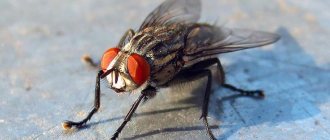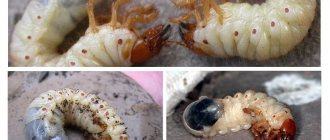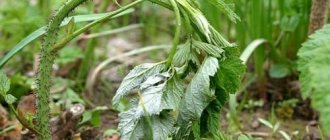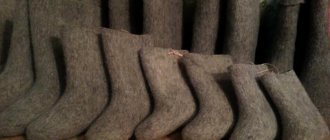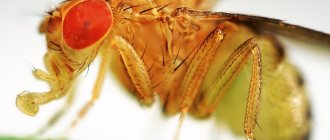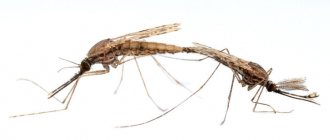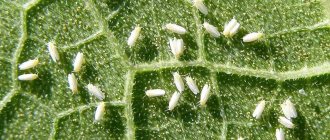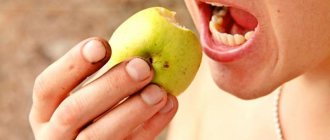Not only we humans rejoice at our harvest, some people also don’t mind feasting on our painstakingly grown products. Of course, there are many who want it, but let’s focus on one pest, which is popularly called the kuzka beetle. With his tenacious paws, with the virtuosity of a magician, he sorts through the spikelets, flying from one object to another.
With particular appetite it eats barley, rye, wheat, and wild cereal grains. The larvae are characterized by increased gluttony and, in addition to cereal crops, eat the roots of beets, tobacco, corn, potatoes, and sunflowers. What does this pest of the national economy look like and is there a way to combat it?!
You need to know the enemy by sight
In appearance, the parasite is very similar to the cockchafer. Belongs to the order Coleoptera (Coleoptera) and the family Lamellaridae (Scarabaeidae). If you look at the photo of the insect, the resemblance to the cockchafer is obvious. The body shape and color are the same, but there are still differences by which one can determine that this is a kuzka beetle. The photo below is a good example.
An adult has a small body length - about 10-16 mm, which, together with the head, is black. The elytra have a rich brown or yellow-red tint, and closer to the edges it turns into a dark brown tone. Females have an identifying feature - a small black spot with a triangular shape, located closer to the head.
The limbs, which are covered with gray hairs, are well developed and allow them to easily cling to ears of corn when flying from place to place. On the head you can see small antennae, and at their tips there are flat plates that, when spread, resemble a fan.
At the same time, there is a difference between male and female individuals: females have more rounded shapes, while the male kuzka beetle has hooked claws on its front legs.
More about the beetle
The insect belongs to the large family of beetles. Most of its representatives eat wood (including that from which residential and outbuildings are built). However, some species do not like wood. They prefer food and dry herbs. These types include tobacco and bread grinders.
Appearance
The bread grinder is a small light brown bug, the total length of its body reaches 1.5 - 3.8 cm. The entire body of the insect (including hard elytra) is covered with small yellowish hairs. On the head there are two large black eyes. Above them is a pair of yellowish antennae, lowered down.
The bread grinder is very similar to the tobacco grinder. They are often confused. The tobacco grinder is smaller and has a more reddish hue. Both beetles are pests that can spoil food.
Insect eggs are white, elliptical. The larva is fleshy and beige in color. Her entire body is covered with long hairs. The usual position for the larva is curved, arched.
Lifestyle
The beetle is active in the warm season (from May to the end of September). But if it gets into a heated room, it can be active all year round. In this case, the beetle is capable of making up to 5 clutches per year.
In the first half of June, the bread grinder has a mating period. After it, the fertilized female lays eggs, of which there can be from 100 to 150 in one clutch. She does this in a nutrient medium (dry herbs, cereals, bread, books). After 1–2 weeks, the eggs hatch into larvae.
They bite into the nutrient medium and make passages in it. After 20–30 days, the larvae pupate. The insect stays in the pupal stage for up to 20 days. After this time, an adult imago is born, ready for further reproduction.
The beetle most often enters residential premises from the street: through cracks, open windows, and vents. It is also possible for the pest to appear from contaminated products brought into the house.
Lifestyle
The entire life cycle, from egg laying to extinction, lasts just over 2 years. Moreover, the pest remains at the larval stage for quite a long time (22 months). After pupation, still young individuals emerge from the ground, and almost immediately they begin a period of active summer. According to various examples, it lasts from the last days of May until the beginning of August. Sometimes the deadline may shift in one direction by about two weeks.
Insects are especially active on sunny and hot days. Moreover, in an area of one square meter you can count from 3 to 5 individuals, or even more. When night comes, they hide in cracks in the soil or under lumps of earth. The Kuzka beetle likes to sleep longer and prefers to crawl out of its hiding places no earlier than 9 o’clock in the morning.
When beetles fly from place to place, they can be heard by their characteristic buzzing. The peak of strong appetite occurs at 3 pm. At this time the heat begins to subside. If the weather is cold outside, insects prefer to stay in their shelters.
Lifestyle of a bread beetle
In the south of our country, it usually occurs at the end of May, and in the north - at the beginning of June. At first, it feeds on wild grasses, mainly wheatgrass, and then switches to grain crops: wheat and barley. Rarely eats barley, and completely ignores millet.
The main delicacy for kuzka is grain crops.
They spend the night in cracks in the ground and under rocks. During sleep, bread beetles are completely motionless. Early in the morning, pests climb onto the ears and start feeding. If the weather is cloudy or windy, then the grain loaf does not move, but if it is sunny, it flies from one spikelet to another. They are most active at 2 o'clock in the afternoon, at which time they fly over the field and buzz characteristically. When the heat subsides, the beetles become calmer and begin to intensively eat cereals. By evening, the pests become lethargic and descend to the ground to spend the night.
A beetle eats 6 grains of wheat per day.
Each grain goose eats about 6 grains of wheat per day, and females cause more damage than males. The lifespan of these pests is about a month, so each individual destroys about 180 grains, which is 9 ears. At the same time, they often undereat the grain and start a new one.
Reproduction
The mating period begins two weeks after the beetles emerge; the process itself occurs on plants. After which the female leaves to lay eggs. Typically, the number of females exceeds the number of males by two times.
In order to lay its offspring, the sow grass (female) burrows into the ground (mainly the soil type is chosen) to a depth of 15 cm, directly under the place where it previously fed. At the same time, she does not lay eggs all at once, but usually in 2-3 batches. Each clutch contains 30-40 embryos. Thus, the female's fertility can reach more than 100 eggs. Having finished the job, the mother dies there.
In appearance, the eggs have a matte white tint and an oval shape, and on top you can see a dense leathery shell. The size is very small - no more than 2 mm.
Stages of development
Beetles go through several stages of development:
- eggs;
- larvae;
- pupae;
- adult.
Egg maturation takes up to three weeks. At the same time, a large amount of moisture, as well as its lack, has a detrimental effect on the offspring. The hatched larvae are dazzlingly white, but as they mature, they darken. For greater clarity, the Kuzka beetle is shown below. The photo shows what it looks like in the larval phase.
The head of the adult larva becomes darker. They first shed their skin at the end of summer, and the following year they undergo two more molts.
The larvae live primarily in the ground, and the depth to which they dive depends on the degree of humidity and surrounding temperature conditions. In spring and autumn they lie at a depth of 1-5 cm, almost at the very surface, and are very easy to detect. But if there is a drought or frost, the larvae go deeper by 25-30 cm. In cold regions, they burrow even deeper for the winter - about 80 cm.
The source of food for small larvae are small roots or rotting plant debris that just fall into their hands. The diet of older larvae consists of plant roots. All bread beetle larvae that have successfully passed natural selection after living in the ground for two years begin to prepare for the next stage.
To transform into a pupa, the larva creates an oval shelter for itself at a depth of up to 15 cm. At this moment, they become especially vulnerable to light, as well as to changes in temperature and humidity.
The adult stage occurs after 2-3 weeks of pupal maturation. However, at first, young beetles still have soft elytra and the cover is not yet strong enough. The young individuals still spend several days in the ground until they are completely strong, and then they come to the surface. After which you can catch the kuzka beetle on the wheat while eating.
Destruction of beetles and their larvae
In order to understand how to get rid of the bread grinder, it is important to know that this is not an insect that, like a cockroach, can easily move from one place in the kitchen to another in search of food, but spends the daytime in places far from food. If a bug finds a new product that is suitable for its offspring, it will remain there constantly, attracting females for mating with the smell. It follows that first of all it is necessary to find a breeding ground for insects and eliminate it.
First, you need to check all the grocery supplies in the house. To detect insects, each product must be thoroughly inspected. When infested by pests, there may be rot inside, small holes, and the bugs themselves and their larvae are clearly visible in the breeding area. You also need to carefully inspect all places in the apartment, since larvae can develop anywhere, for example, in plant fertilizer, in a long-forgotten bag of cereal or mint, in flowers and leaves brought from the street by children.
Finding such a source is the most difficult stage, and the effectiveness of your efforts depends on how responsibly you approach it, because if a few individuals remain somewhere, then after some time they will multiply again and you will have to start all over again again. Then everything is a little simpler.
All products in which bread grinders are found must be thrown into the sewer or onto the street. Single beetles that you see outside of food must be crushed.
If the products are slightly contaminated, the following measures can be taken:
- sift the cereal through a very fine sieve, and then heat it in the oven at a temperature of 70 degrees, remember that the flour cannot be heated;
- legumes can be filled with saline solution, after the insects float up, dry well on a clean cotton cloth;
- Keep the food in the freezer for a day, then fry at medium temperature for 10-15 minutes.
After measures to throw away or salvage food products, a number of other actions should be taken to completely destroy the parasite:
- transfer the surviving products into containers with tight-fitting lids; before this, it is better to keep them in the freezer for a day for prevention;
- rinse all cabinets in which food is stored with water containing acetic acid;
- Wash floors and baseboards with water and bleach;
- if bugs were found in glass containers, then they should be soaked in a soapy solution, then thoroughly washed and dried;
- scald various cracks in the floor and cabinet fittings with boiling water;
- It is advisable to seal holes in wooden elements through which pests can crawl with sealant.
Are chemicals needed to combat the bread borer?
In the case of this pest, there is no need to use chemical insecticides to exterminate it at home, because:
- if food is treated with chemicals, you still can’t eat it later, so it’s better to throw it away immediately;
- products are stored in packages, and beetles and their larvae burrow deep, so if you treat a cabinet or shelf in the kitchen, the product will not penetrate the contaminated product and will not poison them;
- aerosols are designed to exterminate insects over large areas, and bread grinders, as a rule, concentrate in a small area, it is much easier to find bugs and throw away food;
- the use of such means is unsafe for the processor.
Measures to prevent the appearance of bread grinder
After measures have been taken to remove the grinder, you must:
- store bulk products in airtight containers with screw-on lids, throw away paper bags and cardboard boxes, which the larvae readily eat;
- do not keep large stocks at home, but buy only the required amount for the week;
- stop buying the cheapest and promotional grocery products;
- It is good to inspect products before purchasing for the presence of dust, cocoons, beetles and their larvae;
- after purchase, before pouring food into containers, you need to rinse it and dry it in the oven;
- Another option is to keep the purchased groceries in the freezer for a day;
- Once a month, carefully review everything stored in the kitchen cabinets;
- Store dried fruits, bread and nuts in the refrigerator;
- keep the sink and tables in the kitchen dry, as insects need to drink;
- seal the ventilation holes in the apartment with fine mesh;
- do not leave dirty dishes for a long time;
- After eating, immediately put the remaining food in the refrigerator;
- keep the kitchen and home clean.
So be careful, because it’s easy to introduce such a pest, but getting them out can be problematic.
Folk remedies
Folk recipes for getting rid of the bread grinder:
- You can buy pyrethrum powder at the pharmacy, mix it with water and wash the cabinets once a week until the insects are completely gone.
- To control pests, borax is used, from which you can prepare special balls using powdered sugar and millet as additional ingredients. Millet must be ground in a coffee grinder. Mix all the ingredients in equal proportions and make balls out of them, which are then placed in the corners of the kitchen furniture, periodically replacing them with fresh ones.
- Another recipe: take dry yeast, sugar, borax. Grind the ingredients finely, pour them onto sheets of paper and place them in those places in the kitchen where annoying insects have settled. As practice shows, after a short time the pests will disappear.
These methods are not only effective, but also safe, because formulations with borax are not harmful to humans and pets.
There are also many traditional methods for preventing the appearance of small pests:
- if the cereal is stored in canvas bags, then they must first be boiled for half an hour in a strong saline solution, when they are dry, iron them;
- You can put a few unpeeled cloves of garlic in the flour; its pungent smell will repel insects;
- Place gauze bags with salt, or bay leaves, citrus peels, lavender, nutmeg in containers with cereals and in the corners of cabinets; bread grinders cannot tolerate these odors;
- periodically wash cabinet shelves with vinegar solution;
- Place cotton pads with aromatic oils of geranium, rosemary, cloves, basil or fir in places where cereals and flour are stored;
- Place wormwood sprigs or fresh walnut leaves in the kitchen furniture.
Insects in the kitchen are not a death sentence. It is difficult to remove them, but possible. Using simple tips, you can forever forget about such a scourge as kitchen bugs.
Distribution area
The seemingly cute beetle gives many gardeners a lot of trouble. These parasites have adapted to live in Asia and Europe. But their most favorite place is the southern part of Russia and the countries of Western Europe, mainly in Italy and Hungary. But they also like places like the Balkan Peninsula, Siberia and Asia Minor.
On the territory of the CIS countries, they cause serious inconvenience to residents of Podolsk, Kherson, Ekaterinoslav, Kharkov regions, including a number of other areas. But over the past 30 years, their habitat zone has expanded somewhat towards the northeast: Vladimir, Saratov, Kazan regions. Beetles also feel good in the Caucasus or Transcaucasia.
Harm from a beetle
The damage caused by the goose beetle is not inferior in terms of damage to its competitor, the Colorado insect. The only difference between them is that the first specializes mainly in cereal crops, while Leptinotarsa decemlineata eats potato leaves.
The damage caused by the beetle is unimaginable, and damage to cereals is caused not only by adults, but also by larvae. Despite its short life cycle, one mature beetle is capable of eating up to 180 grains (or 10 spikelets). And if you imagine how many there are in total, then what will be the crop loss?! Moreover, the main danger lies not only in eating grains, but also in the fact that beetles are able to knock them off the ears to the ground. In this regard, the number 180 can increase to 400.
According to average expert estimates, the bread beetle is capable of destroying a crop of 1.1 hectares of winter cereal. Spring wheat may suffer even more – up to 2.3 hectares.
Measures to combat kuzka
The damage caused by the cutting is hard not to feel. It begins to manifest itself at the larval stage, eating the roots of agricultural crops. The beetle can harm not only wheat, but also oats, barley, rye and other cereal crops. Plants damaged by larvae begin to dry out and die, and the cause of this condition cannot be determined immediately, since the larvae are not visible underground.
We suggest you familiarize yourself with: Brazilian black and white spider
Adult individuals are quite voracious and begin to attack grain crops from the very first moments of life, swooping into fields in whole flocks. In a short period of life, one such beetle can eat up to 8 g of grain, but this is already quite significant. But the main damage is caused by beetles not so much by feeding, but by knocking grain from the ears to the ground.
The Kuzka beetle has been known for a long time. Previously, it was simply assembled by hand or knocked down with special ropes, but now folk methods of dealing with kuzka have been improved:
- The beetle loves young grain, so traditional methods often use early harvesting, before hungry beetles have time to damage it.
- The kuzka beetle settles only at the edges of the fields, it is no longer found in the middle, for this reason you can use an excellent distracting maneuver. People sow cheaper crops around the perimeter of the field, which serve as food for the beetles, while the field itself remains untouched.
- As a folk remedy, you can also use a vinegar solution that is used to spray crops.
- Birch ash is also destructive to the beetle. She needs to powder the crops around the perimeter of the field. Unfortunately, this remedy is not very effective against larvae that eat the roots. The powdering procedure is carried out either after rain or in the morning after dew appears, as it is more effective. For 1 hectare of land, 10 kg of ash is used. You can also sprinkle ash on areas of the ground between the rows.
To combat the beetle, chemicals and insecticides are often used, although traditional methods are more effective. To combat the pest, it is necessary to use fairly toxic substances in significant concentrations, but they begin to destroy insects after the beetles have begun to damage the ears.
The best drugs for the Kuzka beetle:
- Karate Zeon. This drug is safe for people and animals, so it can be used to treat both plants in the fields and already harvested grain. It penetrates the protective shell of the beetle and affects its nervous system. As a result, the beetle stops feeding. The next stage is paralysis and death of the pest. The drug is convenient because it is produced in granules for diluting a suspension, is well stored and does not have a pungent odor. When spraying the above-ground part of the plant, approximately 200-300 liters per hectare are spent.
- Parachute. This drug also leads to paralysis and death of the beetle, but does not harm humans or plants. It is especially effective against hidden insect species. The effect of the drug begins within the first 2 days after spraying. However, the beetle becomes addictive, so it is recommended to alternate insecticides.
- Euphoria. The drug actively fights insects and penetrates the sap of plants, which significantly increases their resistance to adverse environmental factors. Even if the drug does not reach the beetle, it dies after a period of feeding.
Some drugs are used to treat seeds before sowing to prevent the appearance of beetles, but these preventive measures do not always help. Most often, you have to fight the beetle after it appears.
It is impossible to disinfect all the soil in the fields, so they resort to methods such as regular post-harvest plowing of the soil. It allows you to get rid of some of the larvae and eggs.
To combat the beetle, the following measures are used:[2]
- Pre-sowing cultivation (ploughing) of plowed land
- On fallow lands (see Crop rotation), deep plowing is carried out at the end of May - beginning of June
- Inter-row cultivation of row crops
- Stubble peeling (post-harvest loosening) of the soil
- Separate harvesting of wheat at the beginning of wax ripeness, which protects the grain in windrows from being eaten by beetles
- Spraying crops with insecticides.
Is it possible to protect your crop?
The war against such parasites has been going on for a long time and is associated with certain difficulties. The fact is that beetles spend most of their lives in the larval stage and burrow to a certain depth, which reliably hides them from detection.
In modern agriculture, different methods of control are used:
- carrying out inter-row tillage (the best period is the last days of May - the first days of June);
- harvesting as early as possible;
- use of insecticides (effectiveness has been proven over 10 years of use);
- carrying out early autumn plowing.
Among insecticides, products such as Metaphos, Chlorophos, Sumition and Decis Extra are very popular.
Only this measure of combating the black beetle is carried out approximately 20 days before the start of harvest, no later. In this case, the death of insects reaches 90%.
The enemy of my enemy is my friend
Fortunately, the pest has enemies whom we can call our friends. Kozka larvae can be eaten by shrews and other beetles. When plowing fields, they may appear on the surface, which can attract the attention of some birds: gulls, rooks, ravens and jackdaws.
Other birds will not refuse to feast on adult beetles:
- starlings;
- sparrows;
- shrikes;
- squints;
- storks;
- hoopoes.
Predatory flies and wasps also pose a serious danger to cereal lovers. Small worms can get inside the larvae, which also leads to their death. Thanks to them, the number of pests does not go off scale.
The reason for the mass development of the national pest
As paradoxical as it may sound, the reason for the large-scale development of these parasites comes from ourselves. Some time ago, the diet of the beetle beetle included only wheatgrass, and the number of individuals was minimal, since after its flowering there was no other suitable food.
Over the years, agriculture began to develop, which gave insects the opportunity to taste new foods. As you can understand, they especially liked it. In addition, poor cultivation of fields only benefits pests.
What kind of pest is this, reproduction and habitats
Previously, these beetles fed on wheatgrass, and then began to move on to cultivated cereal crops. When pests fed on wheatgrass, their numbers were smaller, since after this plant flowered, there was no other suitable food available. When agriculture developed, beetles switched to rye, wheat and barley. Thanks to this, the period of existence of the bread beetle increased. In addition, poor cultivation of the fields affects the proliferation of these pests.
If you find an error, please highlight a piece of text and press Ctrl Enter.
